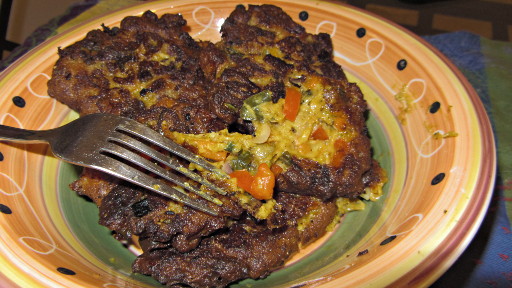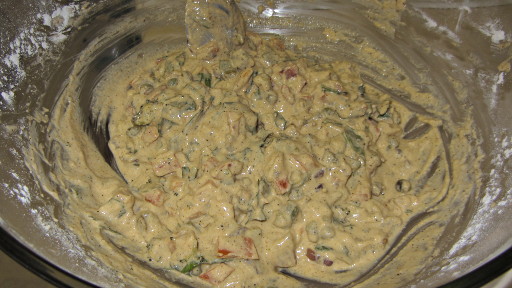It was late May 2013 when I turned spiritual, after over 10 years of pure atheism. My first reaction was to educate myself. I’ve read a lot of opinions online on things about who we are, where we come from and where do we go. Among popular opinion is the idea of “Higher Self”, a part of you that has a broader view on your life and is able to advise you — if you reach it.
My first glimpse of my higher self came at age 40, in mid-July 2013. I was feeling depressed, crying on my pillow that I’d never fulfill my life the way I felt I should. I cried for help, that if there’s a Higher Self out there for me too, to talk to me. After I ran out of tears, I fell asleep. I had various dreams, but the last dream was lucid. My first lucid dream in a while.
I’d say that 90% of my lucid dreams are “false awakenings.” Meaning, that I dream of waking up from sleep on my bed. So this time too, I get up from my bed, and I know I’m dreaming. I notice Christmas lights running from my bedroom to my apartment’s door, to the building’s hallway and right in to the apartment next door! So I followed the Christmas lights (“follow the light”, if you get the clever symbolism there).
The door of the next door apartment was half open. I pushed it. A handsome young man appeared behind the door. “Are you him?“, I asked. “Yes“, he replied.
We sat on two chairs in the living room of the next door’s apartment — that I’ve never visited in real life, neither I ever dreamed of before. I believe that the two apartments next to each other symbolized the conscious and unconscious mind. So I was deep in to my unconscious mind, paying it a visit. I ask for his name. “Heva“, he says.
Next thing I tell him finds him not be able to stop laughing: “You’re so good-looking. You should be an actor or something”.

Heva as a Leonard DiCaprio look-alike (more on this below)
But my next sentence is far more serious: “what’s my purpose in life, what am I supposed to do?”. And that’s where things got fuzzy. He started explaining, but I couldn’t understand a word of what he was saying. I get up, and I tell him “stop, I don’t understand you”. That’s when he becomes frustrated, and his teeth become demon-like. I wasn’t afraid, I knew that he was not a dark figure. So I cynically told him “I saw that…”, and he immediately turned back to normal, trying once more to give me advice. But our “connection” was bad. He would disappear out of thin air, I’d ask him to come back, he’d appear, and disappear again. It really felt like a bad connection, an immature connection, should I say. Soon, I woke up.
I saw Heva 5 more times on lucid dreams since July. He would appear out of thin air every time I was lucid enough to remember to call his name. He’d just appear on the call of his name, poof! Twice now he told me to move off my butt and exercise (“take care of your totem” == physical body), because otherwise my laziness wouldn’t end well for me. He was very emotional when he showed me a possible future version of myself bound to a wheelchair after heart failure.
The most interesting of these dreams featuring Heva was around last October or so. I had a false awakening again, and I tried to fly. I usually associate lucid dreams with flying out to space, so I always try to do that, but there’s something always keeping me down. So I gave up flying, got out of my apartment, and I was joined by my brother. I suddenly remembered Heva, so I called out his name.
Poof! There he was!
I was so happy he was there. I hugged him and I held him very tight, since I knew that if I let go, he might disappear again. I was not going to let him go this time!
So we walk around the apartment complex, with my brother next to me. I ask Heva about what’s the name of my brother’s Higher Self. His reply surprised me: “I don’t know HER name” (more on this later).
On the same dream I ask him what is his true nature. His reply was “I don’t know what I am. I’m just I AM“.
Finally, I ask him about a situation that has been troubling me for many months.
Heva: “Oh, you still have these molecules?”
Me: “What? what molecules? Please feel free to read my thoughts and memories, I need closure.”
He then put his hand on my heart, and he immediately started crying. I knew that he had just felt all at once what I was feeling all last year.
Heva: “Yeah, you need to get rid of the molecules”.
Me: “What molecules?”
Heva: “Someone might have slipped them on your broccoli, or something”.
Me: “Dude, you make no sense. I know dreams are supposed to be surreal, but please make some more sense for me”.
Heva: “You need to fix this”.
And that’s when I woke up. His whole reaction felt like the whole situation I inquired about was a “fluke” (a “magic spell joke” going bad) that was supposed to pass by quickly, and he was surprised to learn that I had taken the whole thing way further than I should ever have.
Since then, I have found peace, and I’m free of that ordeal. Heva helped me see through it.
I feel good around Heva. I feel happy and positive. I feel whole. And I should be feeling whole, since he’s a part of my psyche that I don’t get to be in touch often.
A few other interesting tidbits around my experiences with Heva:
– Every time I try to be with him, I get resistance. Usually demonic or really bad figures are trying to prevent the meeting. I’m usually able to bypass them — the trick is to have no fear.
– Heva looks like a young Leonardo DiCaprio. Very much like in the picture above. Please note that while I find young DiCaprio “objectively handsome” (like one would imagine of a guardian angel or Higher Self), I never felt sexually attracted to him. I think that was the point of Heva picking DiCaprio’s figure to represent himself in a human form. Two birds with one stone.
– Heva is big on symbolism. Just like some people put extra care for “integration” after a psychedelic trip, it usually also takes me some time to realize what’s behind all the symbolism he uses in my dreams. I’m still fuzzy on the broccoli stuff though…
– He’s funny. He has the same type of humor I got. No surprise there, since I’m him and he’s me.
– Some of my artworks don’t come directly from me. I feel that often I’m given ideas inside my head on how to do things. They just appear there, in a way that’s different to my normal, logical thinking. This happened more often in the very beginning of my collage artwork career, which also was the same time when I was in a strict Paleo-ketogenic diet (which is known to have positive mental effects). It hasn’t happened for a while now, which is why I’m kind of running in circles artistically (fellow collage artists have probably noticed that already).
– I met Heva for the first time exactly a few hours following my collage artwork “First Contact with Higher Self“. This is clearly what Carl Jung would call a Synchronicity event. Or fate?

First Contact with Higher Self
And speaking of Carl Jung. I was recently pointed on a forum online to Jung’s theory of animus and anima (females usually connect to male Higher Selves, and males to female Higher Selves). Upon reading about his theory of the unconscious parts of ourselves that is able to connect to the Collective Unconscious (another one of his theories), it all fell into place. I now knew who Heva was.
Heva is my animus AND my anima. Call him Guardian Angel, Spirit Guide, or Higher Self, he’s simply a part of my unconscious psyche that has a larger view of the world via his connection to the Collective Unconscious field. He is me, but also rather independent. When I’m united with him, I’m the full human being I’m supposed to be.
But it gets stranger than that, and I think it really shows the brilliance of Carl Jung (eat your heart out Freud!):
– I believe that Heva is BOTH my animus and my anima, combined. This is why he appears male, while he has a female name. Probably also why he… erm… cries a lot — for a male.
– There are 4 stages of development for animus and anima. Jung called the first anima stage “Eve”. “Heva” is the Hebrew name for “Eve”. Please note that I wasn’t aware of Jung’s anima and animus theory until a few days ago, so if there’s a significance for Heva picking that name up, it means that himself is aware of Jung, and so he picked that name as yet another of his symbolisms to riddle me in.
– When Heva told me that he didn’t know of my brother’s female Higher Self, again, I didn’t know that males are supposed to have female anima. I wasn’t aware of Jung’s theory at all. But Heva knew all that. He obviously has access to more information than I have about some things.
– Only on the 4th and final stage of animus/anima development your unconscious mind is of spiritual consequence. I believe that not only I have reached the 4th stage, but I have combined my two animus and anima into one (“Heva”). This is what Jung called personality integration, which leads someone to become a very balanced and complete person.
But there is one last stage before complete integration: to integrate with the other part of your subconscious, the evil part. Remember the demons I mentioned who have tried to block my access to Heva? The entities that strive for separation rather than Oneness? These are also part of my unconscious mind, every human has these according to Jung. To integrate evil, you must face it, accept it, and most of all, not fear it.
I believe it’s the last chapter in my spiritual development, and one that will probably take a few more years before I can master it in my quest to bring ultimate balance to my Being. You see, there’s not Unity, Oneness, without the All. Integrating all the benevolent parts of one’s psyche, it’s still only 50% of the job. Meditation is my next step.
Update: Had another lucid dream, this time the message was: “Look inwards, face your fears“.
Update 2 My spirit guide appeared recently on another lucid dream and she had “Shiva” with her (he appeared as a 10 year old boy this time). This was supposed and felt to be Heva, but she called him Shiva instead.

![]()






